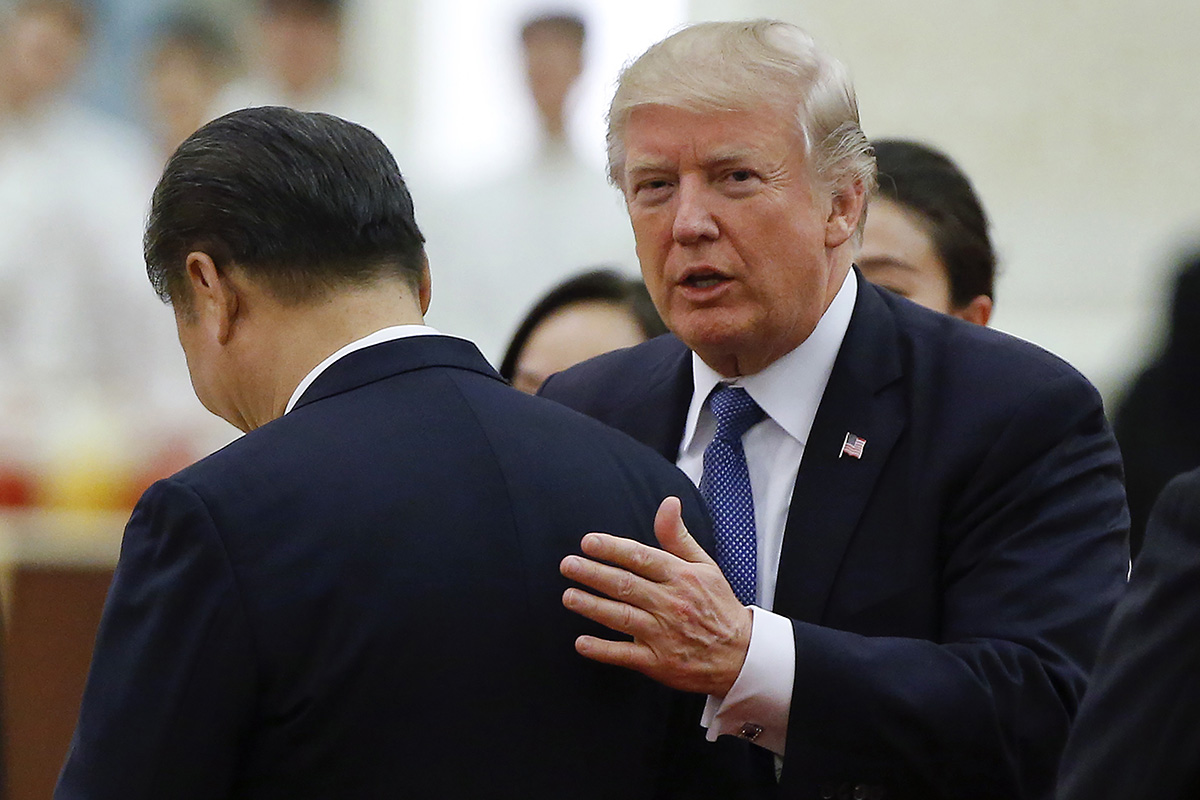Two days of US-China trade discussions ended in Beijing with an agreement to keep on talking, and little else.
China’s official Xinhua News Agency reported Friday afternoon that both sides reached a consensus on some trade issues while acknowledging major disagreements on some matters. It said they would continue discussions, without providing specifics for when they would start again. Neither side briefed the media, and the US delegation led by Treasury Secretary Steven Mnuchin departed Beijing in the evening.
While a cure-all deal was always a long shot, the discord between the world’s two biggest economies means skittish global markets will continue to face ongoing trade tensions. The immediate question – which may not be answered until President Donald Trump takes to Twitter – is whether the US got enough wins to delay planned tariffs of up to US$150 billion on Chinese imports.
“A disagreement over trade practices that has built up over more than two decades will take much more than two days to resolve,” said Shane Oliver, the head of investment strategy at AMP Capital Investors Ltd. in Sydney. “A negotiated solution remains most likely but it will take time with a lot of posturing and near-death moments along the way.”
Heading into the talks, both sides outlined a series of tough demands, with the US focused on reducing a deficit in goods it says reached a record US$375 billion last year.
The US delegation asked China to reduce support for high-tech industries, allow US companies non-discriminatory access in China and cut the trade deficit by at least US$200 billion by the end of 2020 from 2018, according to a document seen by Bloomberg. It also called on China to avoid any retaliation, drop a pair of World Trade Organization cases and agree to quarterly reviews of its progress in meeting targets.
The Chinese side – led by Vice Premier Liu He, President Xi Jinping’s top economic adviser – asked the US to stop its 301 investigation into Chinese intellectual property abuses, drop planned 25 percent extra tariffs on Chinese goods and end discrimination against Chinese companies in national security reviews, according to a separate document also seen by Bloomberg. China also asked the US to open its e-payment market and approve China International Capital Corp.’s application for a financial license.
China also warned that US companies may be excluded from its domestic market, saying any of its moves to reduce investment restrictions may not be applicable to American businesses if the Trump administration doesn’t agree to treat Chinese companies equally, the document said.
Trump had sounded a positive note just before the talks began, saying in a tweet that his “great financial team is in China trying to negotiate a level playing field on trade!” Yet friction was evident, with the US releasing a report Thursday that showed the trade gap with China surged by 16 percent to more than US$91 billion in the first quarter of this year.
China had also drawn hard lines. A senior official, who asked not to be named, said Xi’s government wouldn’t accept US preconditions for negotiations such as abandoning its long-term advanced manufacturing ambitions or narrowing the trade gap by US$100 billion.
Reporters had little access to information in Beijing. China’s largest media outlets were banned from reporting anything on the talks beyond official press releases, while the U.S. side studiously avoided journalists staked out at their hotel in Beijing.
‘Trade War’
During the second day of discussions, Xi gave a speech commemorating the 200th anniversary of Karl Marx’s birth in which he said those who reject the world will be rejected by the world. It’s unclear if he met with the US delegation.
That may not have made much difference given the wide chasm between negotiators.
“The US demand of cutting the trade gap is baseless, and can’t be done by the Chinese government,” said He Weiwen, deputy director of the Center for China and Globalization in Beijing and a former Commerce Ministry official. “It’s at least good the two sides decided to keep talking, though one can’t rule out the possibility of a trade war.”
While tensions are set to increase, the economic impact would likely be limited, according to Tom Orlik, chief economist at Bloomberg Economics in Beijing.
The two sides, which suspended high-level economic talks last year, sounded some notes of optimism. They agreed a “sound and stable” trade relationship is crucial, and planned to “establish a corresponding work mechanism,” Xinhua said.
Still, any deal appears to be a long way off.
“The US has gone off the deep end by asking for too much,” said Brian Jackson, China director at Medley Global Advisors LLC, which gives policy guidance to institutional investors. “They’ve asked for US$200 billion off the deficit in a very short timeframe. For me that’s a deal-breaker for the Chinese. If you state such an extreme starting position, you know you can’t get somewhere reasonable.” – Bloomberg
